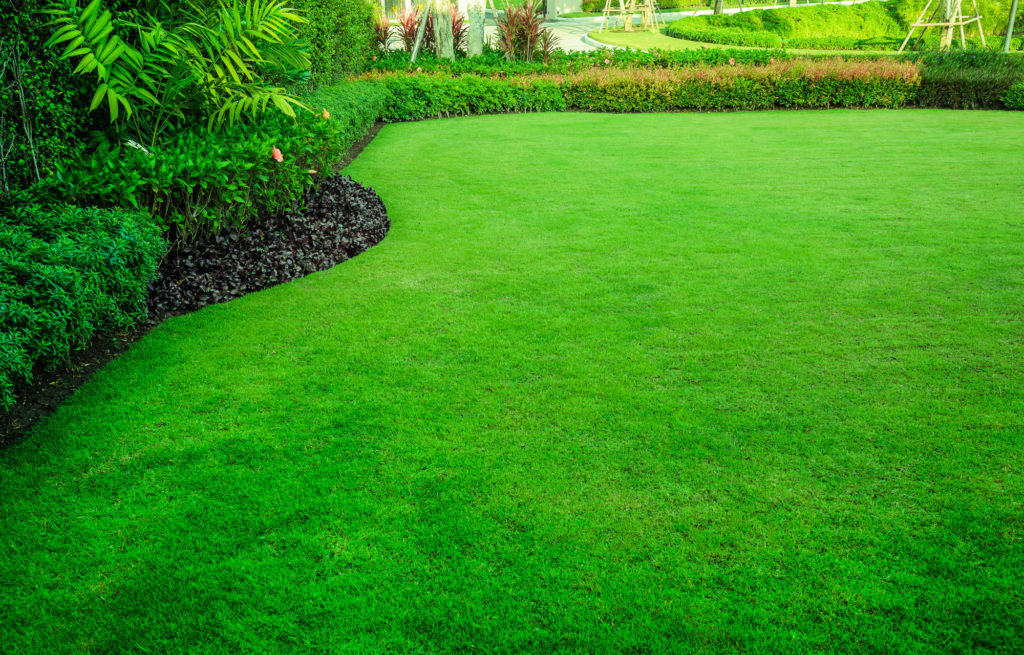
How to Maintain a Healthy Lawn
Originally posted on https://domesticationsbedding.com/how-to-maintain-a-healthy-lawn/
Do you want to breath cleaner air, enjoy a beautiful garden, and have the perfect place to host family and friends?
Well, it’s time to get a healthy lawn. Maybe you don’t have time to spend three or four hours working on your lawn each week.
But, there’s a good chance you’ll be able to follow the advice in this article. Trust us, these tips won’t make your life any more complicated, but you’ll still enjoy outstanding results!
Let’s start with the basics. If you want to have a healthy lawn, you need to pay attention to it.
Let’s delve into this in a little more detail…
Water Your Lawn (Efficiently)
It’s common for people to try and water their lawn for a few minutes every day, or even four times a week, with a small amount of water.
This superficial watering doesn’t encourage grass to grow healthy, deep roots. Just turning on your sprinkler for small periods, only wets the surface of the soil.
Spoiler alert: This doesn’t nourish the roots well enough, especially during the hot seasons.
Instead, water your lawn for longer and less frequently, as the water will go deeper into the soil and strengthen the roots of the grass.
Consequently, your garden is more likely to be resistant to the hotter seasons. Plus, it will get the nutrients from the part of the soil that’s still damp — win-win!
If we speak in numbers, submerge your lawn in one inch of water once a week. But, during the summer, water every other day (1/3 of an inch of water).
However, if you just planted your grass, give it an initial four to five inches of watering. This helps to prepare the soil. Then keep to the advice mentioned above.
Fertilize Your Lawn (Adequately)
The quality of your grass also depends on the quality of your soil. Some soils are better than others. Period. For instance, Idaho sod is said to be some of the best around.
Just think about a person trying to get in good shape, but doesn’t eat well, or skips meals regularly. It’s impossible!
Likewise, you’ll never produce a healthy lawn without fertilizing it with the nutrients it needs.
Top Tip: Fertilize your grass at the proper time of year; at the start of both the spring and the fall.
Why?
Fertilizing grass at the start of the spring encourages root growth during this season. Whereas feeding your lawn again, at the beginning of fall helps repair any damage caused by the hot summer months.
If possible, use natural fertilizers. They provide better results than synthetic ones. Plus, they’re healthier for you and your family.
Handy Hack: A very effective way to nourish your lawn is to leave grass clippings on top of the lawn after cutting it! It quickly decomposes into the soil and provides your garden with some much-needed nutrients.
Cut Your Lawn to the Correct Height
Be as precise as you can when mowing your lawn. Don’t cut it too short. This only makes it weaker and less resistant to hot weather.
Maintaining your grass at a proper height encourages it to grow better roots. Which, as we’ve already said, is better when it faces hotter temperatures during the summer.
The average height you want to achieve is around 2.5 to three inches tall. Not only will your lawn maintain its strength at this height, but it’s also more likely to block the growth of weeds.
During the spring and in autumn, it’s advisable to cut your grass two or three times a month. But, during the winter, it’s recommended to do it once a month. Then, in summer, once every ten days.
Don’t Let Your Soil Compact
When you have pets, kids, or use your lawn area regularly, it’s normal for soil to compact.
When this happens, it affects the lawn’s circulation of air, water absorption, and its reception to nutrients. This reduces your lawn’s ability to grow deep roots and become more weather resistant.
To avoid this happening, make several small holes in the soil. This helps it to receive the air it needs to grow, and at the same time, helps to keep the soil soft. This is essential for ensuring your lawn can access the nutrients it needs.
Remove Those Pesky Weeds
Weeds grow very fast and compete with your lawn for resources and nutrients provided by the soil. As such, when weeds pop up, they can take a lot of the nourishment and water you’re feeding your grass.
Plus, some weeds produce chemicals in their roots that are harmful to other plants. When this happens, it can transform the soil so that it’s no longer suitable to grow a decent lawn.
The answer? Pull them out entirely either by hand or with a handheld weeder. Or, if needed, use an appropriate herbicide to get rid of them.
Are You Ready to Start Growing a Healthy Lawn?
We all want that beautiful, healthy lawn. There’s nothing better than having that fresh green space to decorate our home. If you follow the above advice, you shouldn’t go too far wrong. We wish you the best of luck with growing and maintaining your dream lawn!
If you enjoyed this article, be sure to subscribe to our blog. This is the best way to find and consume similar content. We hope to see you again soon!

